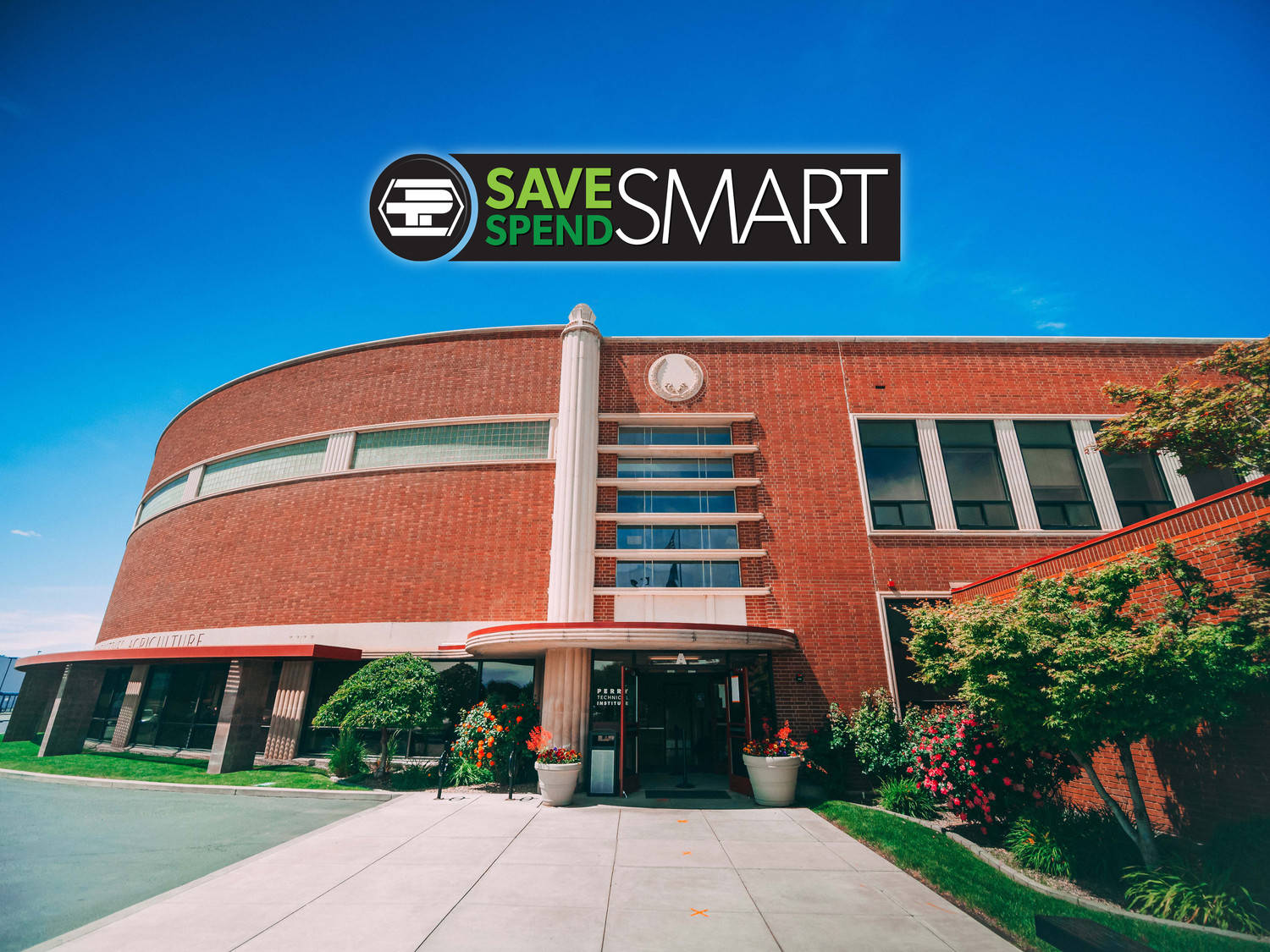
The SaveSmart, SpendSmart Financial Wellness Program promotes financial well-being and encourages students to practice responsible borrowing. High default rates and increased borrowing prompted Perry to create the program. The goals of the program are to make Perry students aware of their borrowing, the effects of over-borrowing, and their repayment options upon graduation.
The path to financial wellness can be confusing and Perry Tech wants you to be successful during your time attending school and beyond. If you have questions about financial aid or student loans please email [email protected] or stop by the Financial Aid Office during business hours, Mon-Thu from 6:30am to 5:00pm. Financial aid is available for those who qualify.

Once you’ve filled out your FAFSA and completed all the financial aid requirements, it’s time to figure out how to pay for college. Many students rely on loans to pay for school. If you are planning to borrow, do your research. There are many factors to consider before accepting student loans.
How much do you need to borrow?
You will need to cover tuition, fees, supplies and other expenses. Also, consider how your living expenses will be paid while in school. Loans can be used to cover these expenses, but you’ll have to pay the money back with interest after you graduate. This is a great time to consider ways reduce your cost of living. Getting a roommate and/or learning to cook instead of hitting the drive-thru for dinner can help you save while in school.
How much can you afford to borrow?
Many students don’t realize how much their loan debt will be at graduation and are left wondering how they will cover their monthly loan payment. Before borrowing, think about what your plans are after graduation. How much money will you be making? Do you intend to relocate or move into your own house or apartment? If relocating, what is the cost of living in your new city? Do you have a one, three, or five year plan after graduation? Set an attainable financial goal and use that as a reference when borrowing.
Know what you owe and avoid being shocked when you graduate. You can see a detailed history of your federal student loans on studentaid.gov. Your student aid dashboard will display your total loan debt with a link to view loan data including interest rates and your loan servicer’s contact information.
Making payments on your student loans while in-school is a great way to manage your debt accumulation and avoid capitalization of unpaid interest. Capitalization is when your unpaid interest is added to the principal balance. As your principal balance increases, you will pay more in interest which can add up over the life of your loans.
As a federal loan borrower, you will be assigned a Federal Loan Servicer that will help you through repayment. They will be your main contact to set up or change payment plans, answer any questions or resolve concerns. If your phone number or address changes after graduation, you need to notify Perry Tech and your loan servicer. Keeping contact will help you successfully navigate repayment.
Students have multiple repayment options: https://studentaid.gov/manage-loans/lower-payments/get-temporary-relief
If a borrower disputes the terms of the Federal Direct Loan in writing and the Loan Servicer is unable to resolve the dispute, a borrower may seek the assistance of the Office of Education's Student Loan Ombudsman. The Student Loan Ombudsman will review and attempt to informally resolve your dispute.
For assistance from the Ombudsman’s Office, contact https://studentaid.gov/feedback-ombudsman/disputes/prepare.
For Washington State residents seeking information and resources about student loan repayment or seeking to submit a complaint relating to your student loans or student loan servicer, please visit wsac.wa.gov/loan-advocacy or contact the Student Loan Advocate at
[email protected].
Budget (Spending Plan)
The word “budget” can bring up a number of emotions for many people. Some sense a feeling of confinement, claustrophobia or intimidation, while others think happier thoughts.
If you experience feelings of fear, restriction and/or guilt when thinking about budgeting, simply change the lingo. You’re not budgeting, you’re planning. A plan for your money is the best way to make sure that you can achieve your goals. You are the master of your money and it’s up to you to take control.
The first step to budgeting is learning your spending habits and needs. Keep a log of all your purchases for a set period of time and track whether the purchase was a need or a want. The results of the log might be surprising.
Needs are the most important things that you will spend your money on: food, rent, electricity, etc. Wants are items or purchases that are not necessary to living but you want them. Always make some room in your budget for wants or you will not stick to your plan.
There are many budgeting apps or websites available to help you create a spending plan that works for you regardless of life stage.
Budgeting and financial literacy sites:
